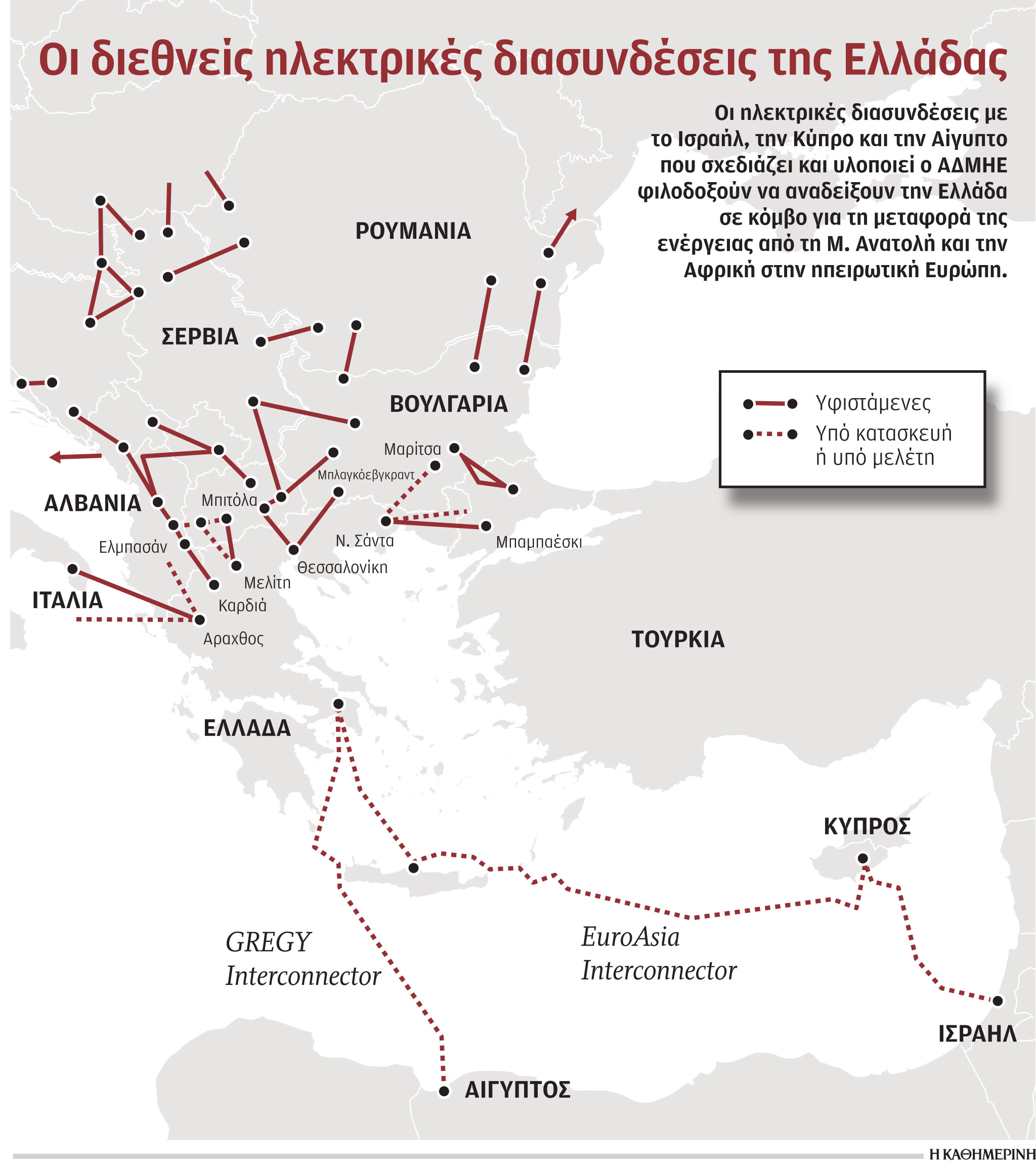
Central role in the transport of greenery energy where will be produced in Africa and the Middle East in Central and Western Europe who is in a hurry to replace Greece claims Russian natural gas and leaving pipelines and fossil fuels behindopening up new international connections in all directions.
Green energy “boulevards” will take the place of pipelines that cross Europe from east to west and from north to south in exactly the opposite direction. New sources of green energy for Europe are found in the south and throughout the Mediterranean, North Africa and the Middle East, and the road to Europe passes through Greece.
According to the network of administrators E.E. ENTSO-E, in addition to the 23 GW of cross-border interconnection planned by 2025, Europe has additional needs for an additional 64 GW of interconnection across 50 European borders by 2030 and 132 GW by 2040 (including storage projects). These new connections are needed to cap Europe’s gas-fired electricity generation at 75 TWh by 2040 and prevent a 42 TWh reduction in renewables.

Ties to Cyprus, Israel and Egypt
Greece-Cyprus-Israel: The Greece-Cyprus-Israel interconnection, with EuroAsia Interconnector as the executing body, is a mature project in which ADMIE’s contribution has been decisive for its privileged access to European financial resources of 657 million euros, from the European Connection Object. The condition for financing the project was the participation of the manager of the transport system in the executive body. ADMIE recently started the process of its investment participation in the interconnect project, as the terms of the Letter of Intent, which it submitted to EuroAsia Interconnector for an initial participation of 25% in the company’s authorized capital, were accepted. The project, with a budget of 2.5 billion euros, concerns the construction of a submarine cable with a transmission capacity of 2,000 MW (1 GW in the first stage) and a total length of about 1,200 kilometers. At the same time, the construction of three conversion substations is envisaged, one in each country, with the construction of the first in Cyprus to begin in the coming months. The Greece-Cyprus-Israel interconnection is a critical energy project that is expected to be completed in two consecutive phases (Crete-Cyprus and Cyprus-Israel) by 2029. Its operation will put an end to the energy isolation of Cyprus, while the Israeli systems will be the first step in the exchange of energy between the Middle East and continental Europe.
Greece – Egypt: An electrical connection between Greece and Egypt is currently being studied. ADMIE is working closely with the Egyptian system operator, EETC, to ensure the technical and financial viability of the project, which was agreed in principle on the basis of the GREGY proposal submitted by Elica of the Kopelouzos Group to the European Commission. The project concerns the connection of Egypt with a 954 km submarine cable directly to Attica. The cable has a capacity of 3,000 megawatts with bi-directional bandwidth and an investment value of 3.5 billion euros. A third of the electricity produced will be consumed by industries in the domestic market, 1 GW will be sent to Italy and Bulgaria, and the rest will be used for hydrogen production. According to the study, the electrical connection will free up 700 megawatts in the existing Greece-Italy and Greece-Bulgaria transmission networks.
The connection between Attica and Crete develops
The electricity interconnection between Crete and Attica is developing at a rapid pace, a project that will strengthen the energy security of the island and pave the way for the development of renewable energy projects. So far, 170 km of the first electrical cable and all fiber-optic cables with a total length of 670 km have been laid, and according to the ADMIE plan, the laying of the second submarine cable with a length of 335 km will continue in 2022, with the goal of completing the entire laying within the first half of 2023 electrical cables. At the same time, Santorini-Naxos connections are ongoing and tenders will follow until the end of 2022 for connections between Folegandros, Milos and Serifos with Lavrio, projects that will be fully completed in 2024. In the previous period, ADMIE completed the connection of Skiathos to Evia, a project that has significantly improved energy security in all northern Sporades.
In Western Greece, the Aktion-Preveza electrical connection is currently being replaced and the modernization of the Kyllini-Zakynthos electrical connection will start in the next period. By 2025, ADMIE plans to modernize all existing connections in the Ionian Islands with an investment of around 100 million euros. By the end of the decade, the projects included in the ADMIE investment program, worth 5 billion euros, according to the vice president of the company, Ioannis Margaris, will create an electric space of more than 28 GW, for RES – from 17 GW today – exceeding the predicted goal of the National Energy Plan and climate by 25 GW over the same period.
Source: Kathimerini
Lori Barajas is an accomplished journalist, known for her insightful and thought-provoking writing on economy. She currently works as a writer at 247 news reel. With a passion for understanding the economy, Lori’s writing delves deep into the financial issues that matter most, providing readers with a unique perspective on current events.